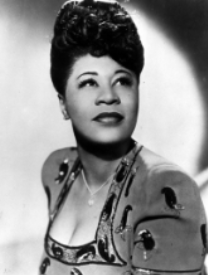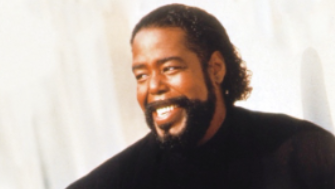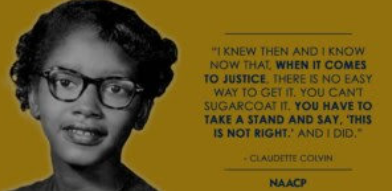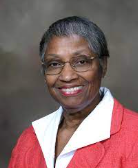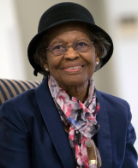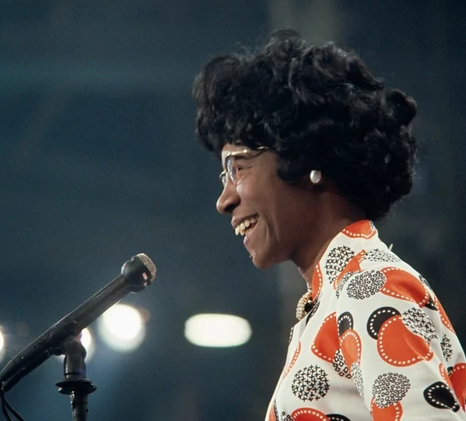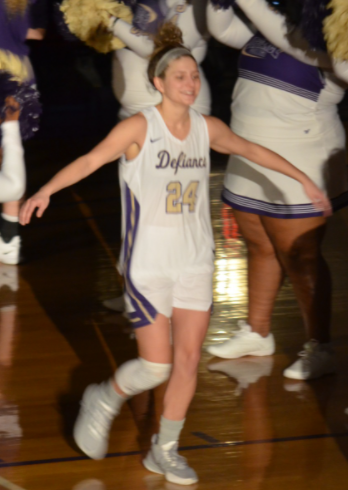Written by: Hailey Krawczyk
Defiance College Athletics stayed busy this weekend despite the cold and snowy weather. The Yellow Jackets hosted three athletic events at Karl H. Weaner Center this weekend.
Athletic events included Men’s and Women’s Basketball games against Heartland Collegiate Athletic Conference (HCAC) competitors the Transylvania Pioneers (Transylvania, KY).
Yellow Jacket Wrestling also hosted a match against the Penn State Behrend Lions (Erie, PA) and the Wilmington College Quakers (Wilmington, OH).
The Yellow Jackets Women’s Basketball team faced off against the Pioneers at 1:00 pm in the Weaner Center, taking on the Pioneers, who are ranked No. 2 in the country in the Women’s Basketball Coaches Association (WBCA).
Starting for your Yellow Jackets were Sophomore Kylie Brinkman, Juniors Taylor Steinbrunner and Lauren Criblez, and Seniors Taylor Day and Nysha Speed.
The game started strong, but the Yellow Jackets trailed the Pioneers 14-12 after the first quarter. The Yellow Jackets got outscored in the second quarter, trailing by 14 at the half. Starting play up again in the third, the Pioneers came out strong, but the Jackets fought back, pulling the game within 10 points. Despite the hard-fought battle, the Yellow Jacket fell to the Pioneers with a final score of 87-53, making the Yellow Jackets record
fall to 6-5 in HCAC play and 11-7 overall.
Key contributors to the contest include Junior Lexie Sparks dropping 8 points off the bench for the Yellow Jackets, Sophomores McKenzie Cooper and Taylor Linkous each added 7 points off of the bench as well.
The Yellow Jacket’s Men’s Basketball team also took on the Pioneers on Saturday at 3:00 pm in the Weaner Center. Starting for your Yellow Jackets were Freshman Landen Swanner, Sophomore Andre Edwards, Junior Desanji Beamon, and Seniors Tyler Andrew and Marrel Jordan. The game started very back and forth and tooth and nail.
Both teams were fighting for points and boards every possession. Going into halftime, the Yellow Jackets took a 37-28 lead. However, the Pioneers fought back to bring the contest within ten in the second half.
Sophomore Cam Awls drained a clutch shot to give the Yellow Jackets a 70-67 lead with about 25 seconds left in an exciting last-minute shot. The Yellow Jackets held their ground to get a massive win over the Pioneers.
Rounding out the weekend, the Yellow Jacket Wrestling hosted a dual meet and came up strong with two wins over the Penn State Behrend Lions and the Wilmington Quakers. The Yellow Jackets were able to get a quick lead against the Lions through a couple of forfeits in the 125lb, 133lb, and 141lb weight class to start the match. Senior Cortez Bradley kept the flow, coming up with a big win in the 149lbs match. Other key contributing factors to this big Yellow Jacket victory include pins from Matthew Beard in the 157lbs match, Keringten Martin in the 165lbs match, Jack Minner in the 184lbs match, and Jonah Schlegel in the heavyweight match.
The Yellow Jackets quickly started their second match against the Quakers, with more forfeits in the 125lbs and 133lbs matches. Seniors Alex Smith and Bradley won their matches by technical fall to help push the Yellow Jackets to victory. Smith won his match 16-0 Bradley won 16-1. Another key factor in this Yellow Jackets win includes Matthew Beard’s second win of the night in the 157lbs match. Martin also earned his second win of the night. Your Yellow Jackets beat the Quakers 28-21 in the dual.


